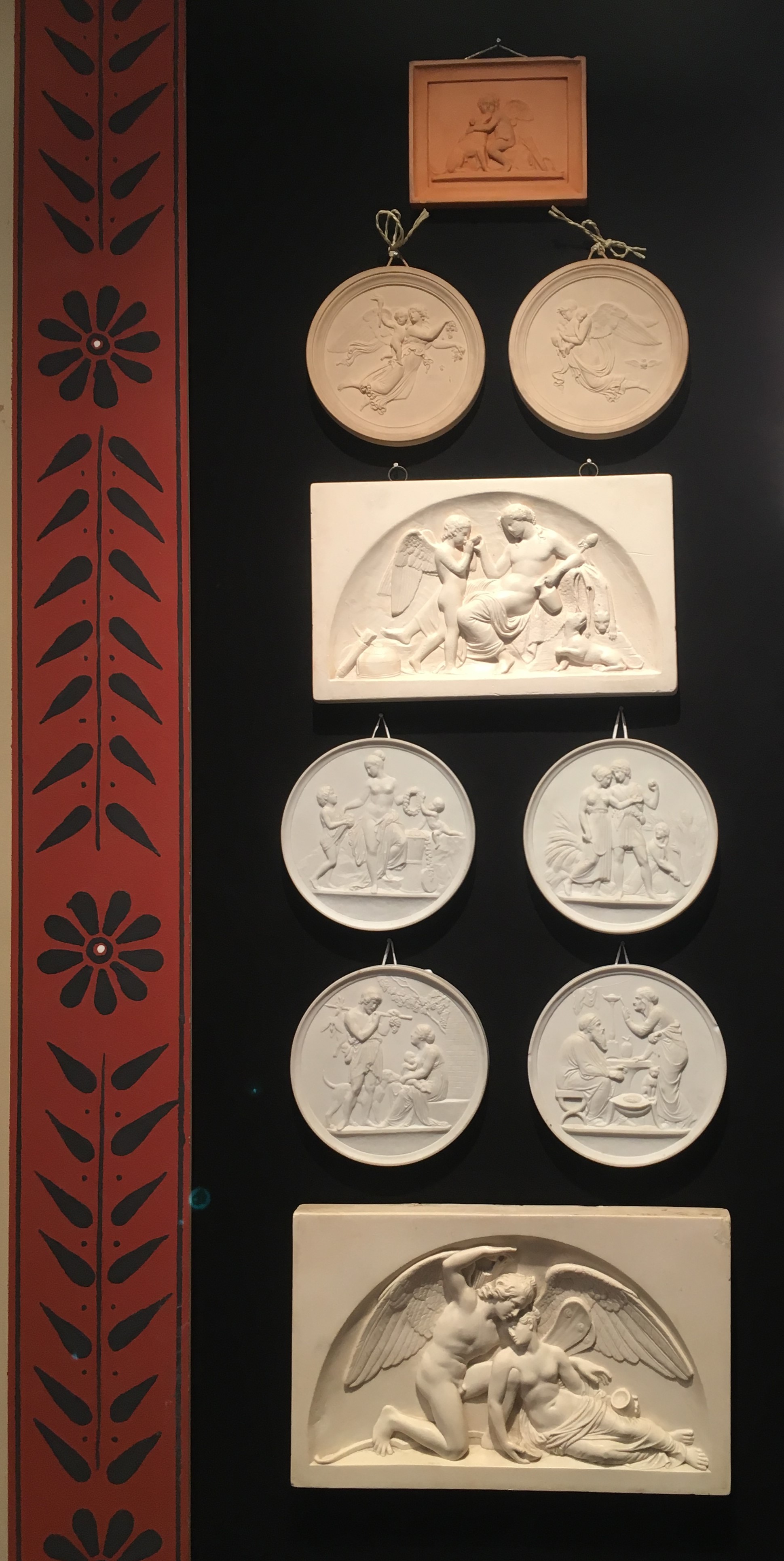Artist of the Moment
BERTEL THORVALDSEN
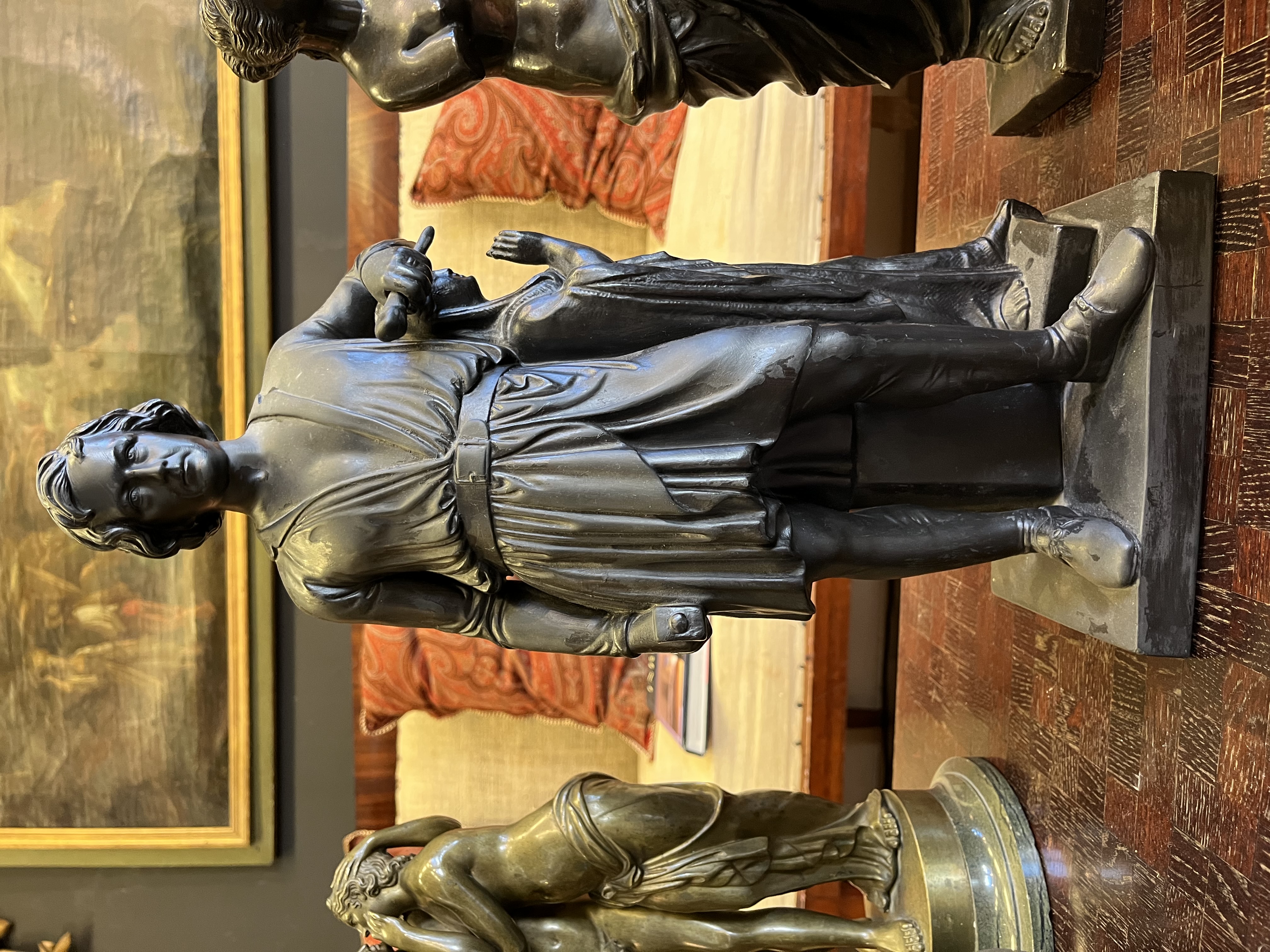
Self Portrait with the Goddess of Hope
Based on the original plaster model from 1839, Thorvaldsen Museum, Copenhagen, Inv. No. A162, black terracotta figure from the L. Hjorth factory, Bornholm, manufactured approx. 1890-1919, marked: Eneret (exclusive reproduction rights) 416
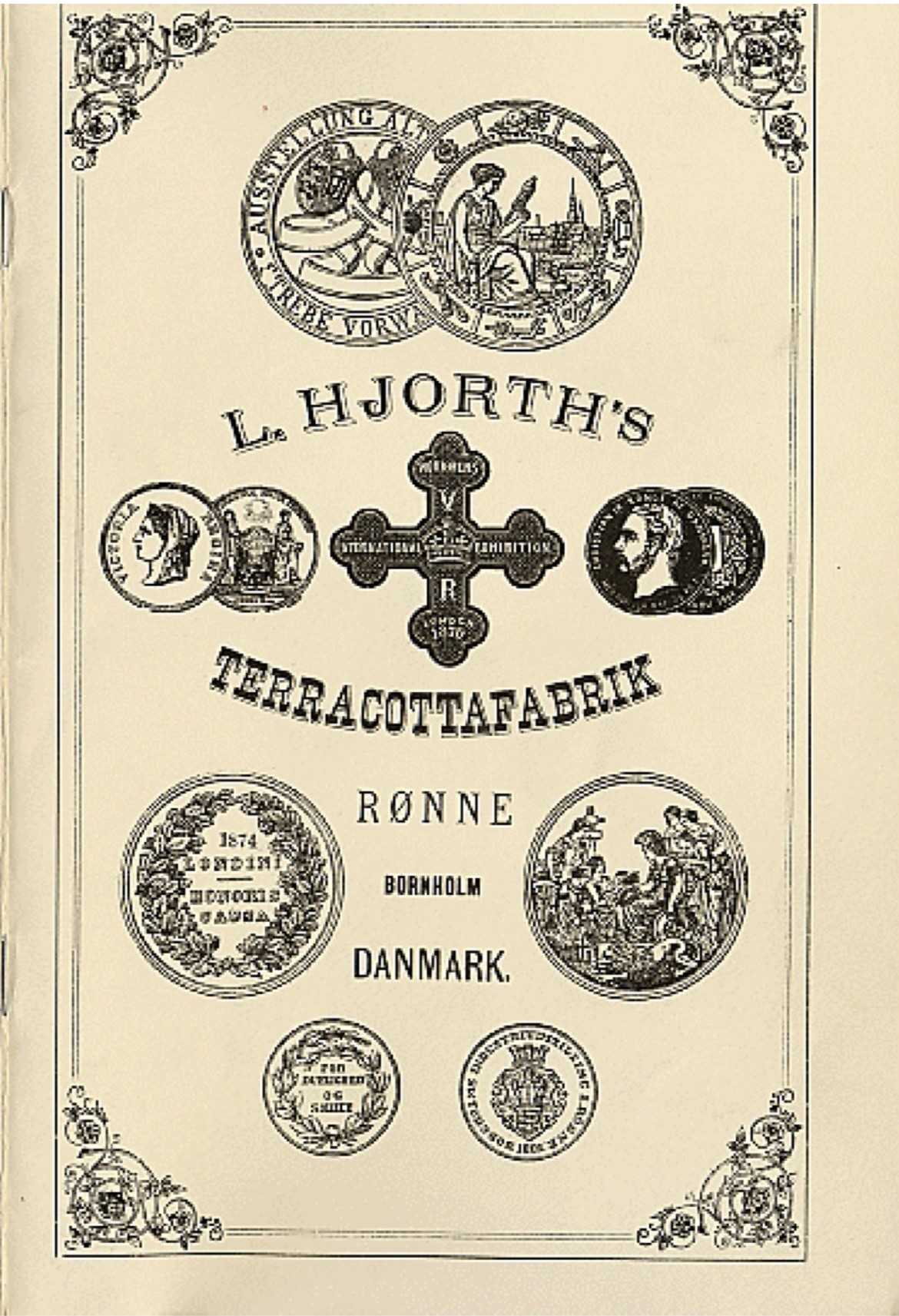
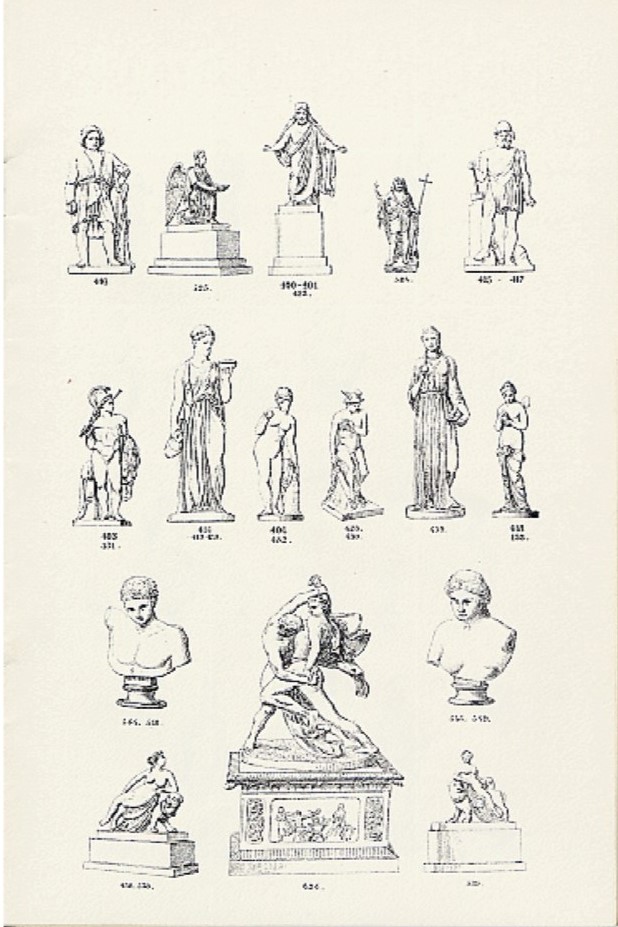
Thorvaldsen (1770 Copenhagen – 1844 Copenhagen) was the hottest superstar among Rome’s sculptors from 1797 onwards, counting kings, nobility, and the upper middle class among his clients. Everyone wanted to own one of his works. In order to cope with the immense volume of commissions, up to forty students and employees were at times busy in his large studio, organized according to a division of labor, creating life-size plaster models based on his designs, which were then reproduced in marble depending on the commission. The master came up with the ingenious idea for the work and the first model in plaster or clay. He did not lend a hand in the execution. Given this system, the boundaries between original, workshop replica, and copy became blurred. The buyers did not care. Depending on their wealth, they were just as happy to buy the second or umpteenth marble version as they were the plaster cast or the bisque porcelain plaque. For his self-portrait, he depicted himself working on the sculpture of the goddess of hope, on which he also leans. His gaze appears determined, and he seems to be taking only a brief creative break until the next brilliant idea comes to him. His mainly Scandinavian, Eastern European, and German buyers did not value his works as virtuoso, ingenious unique pieces, but as an expression of education. The artist’s idea and his affinity for antiquity were the decisive factors. Given the overwhelming demand for his sculptures and reliefs, Thorvaldsen would hardly have had the time to carry out every step of the work himself. With his division of labor in the studio, he anticipated the factories of today’s star sculptors such as Jeff Koons and Damien Hirst.
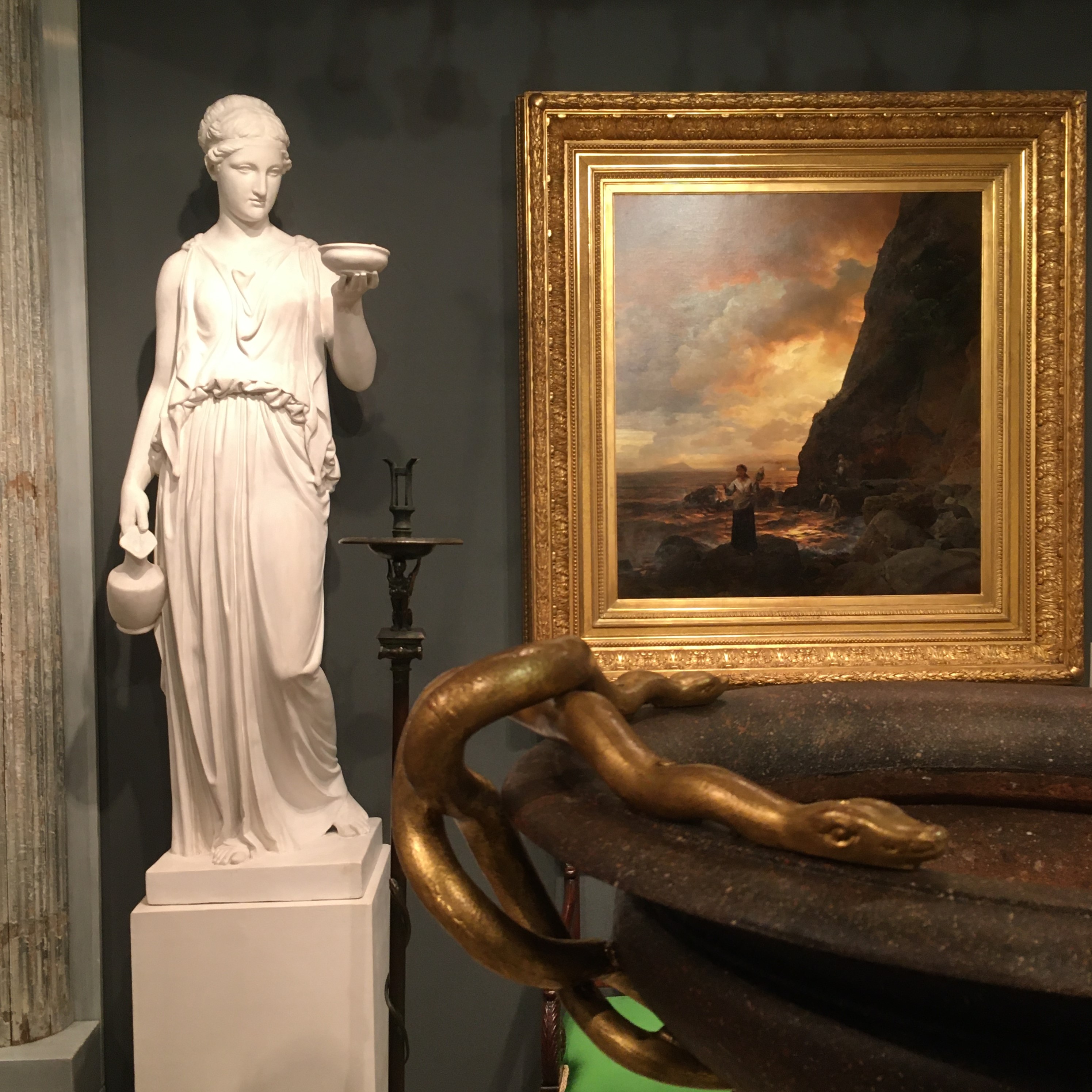
HEBE
Based on the original plaster model from 1816, Thorvaldsen Museum, Copenhagen, Inv. No. A39, plaster cast authorized by the museum in original size, 153 cm plus pedestal (photo taken at the trade fair in Munich)
One of Thorvaldsen’s most beautiful sculptures, which perfectly embodies his style, is Hebe, Cupbearer of the Gods, which he conceived in 1816. Hebe expresses what his friend and contemporary Winckelmann postulated as the essence of ancient Greek sculpture, namely “noble simplicity and quiet grandeur.” Hebe, in classical contrapposto, is completely at ease without appearing lifeless and is of noble, idealized beauty. With sculptures like this, Thorvaldsen wanted to directly connect with antiquity and heal what he saw as a break and decline in art since then.
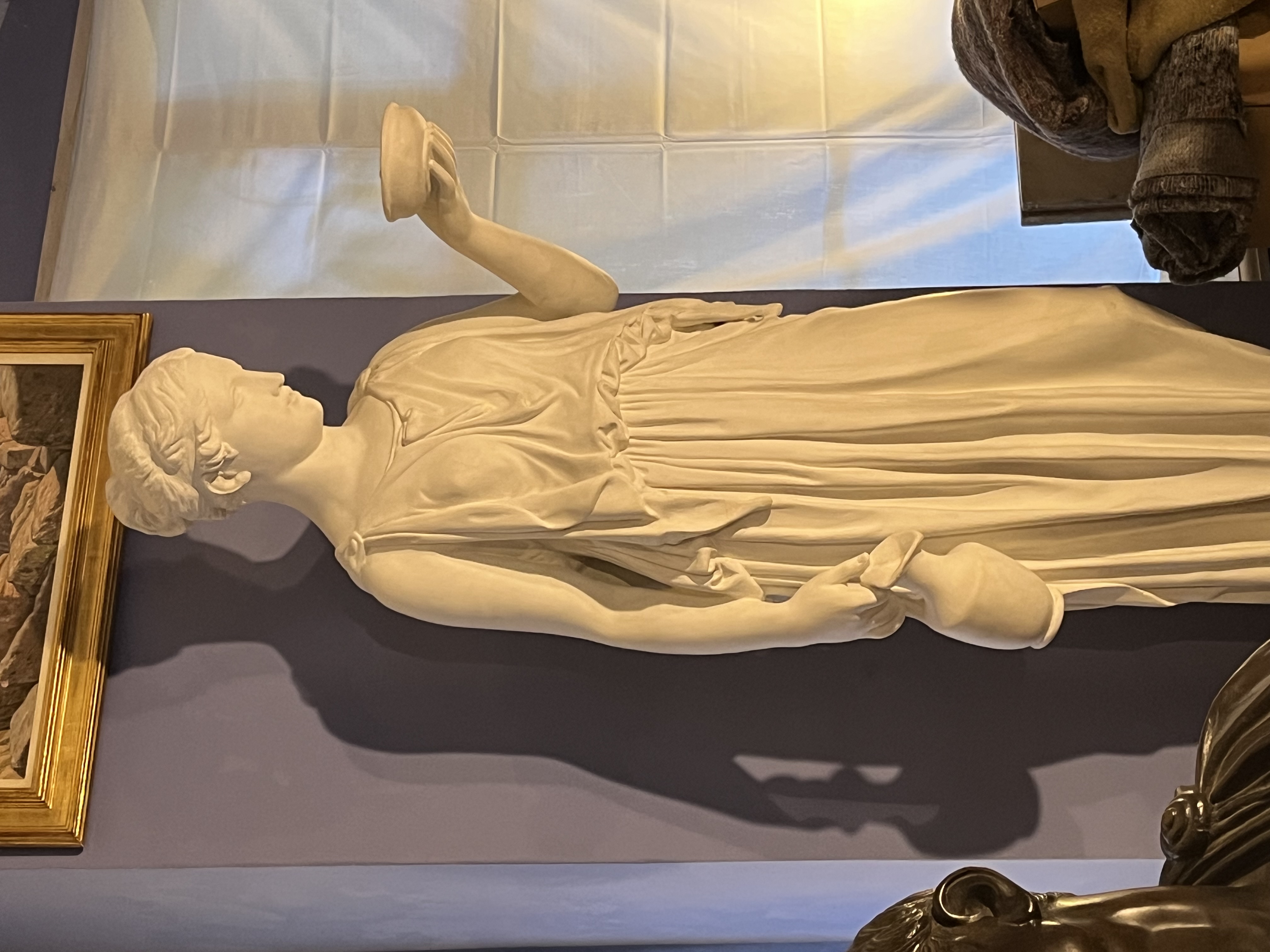
Photo from our showroom in Bautzen
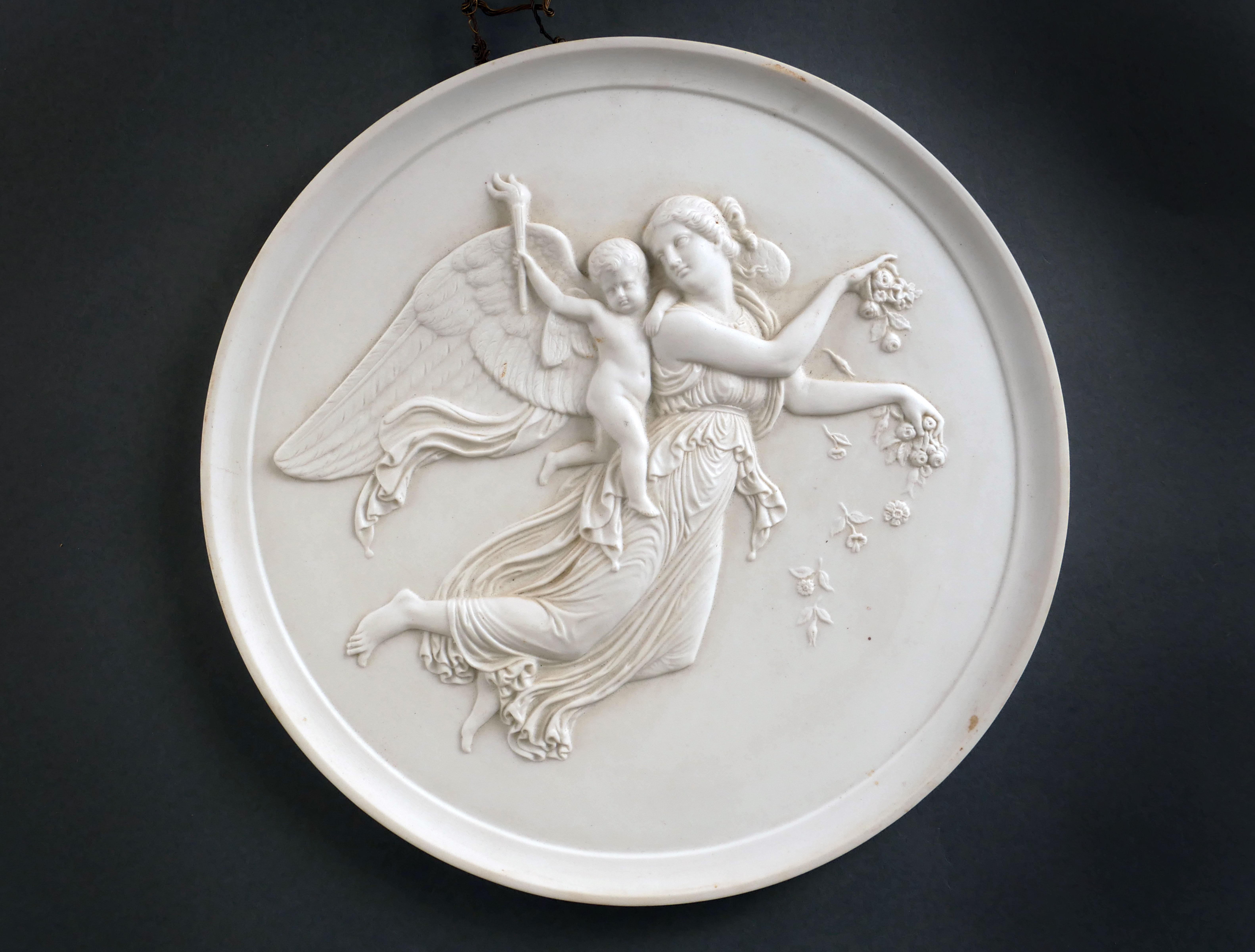
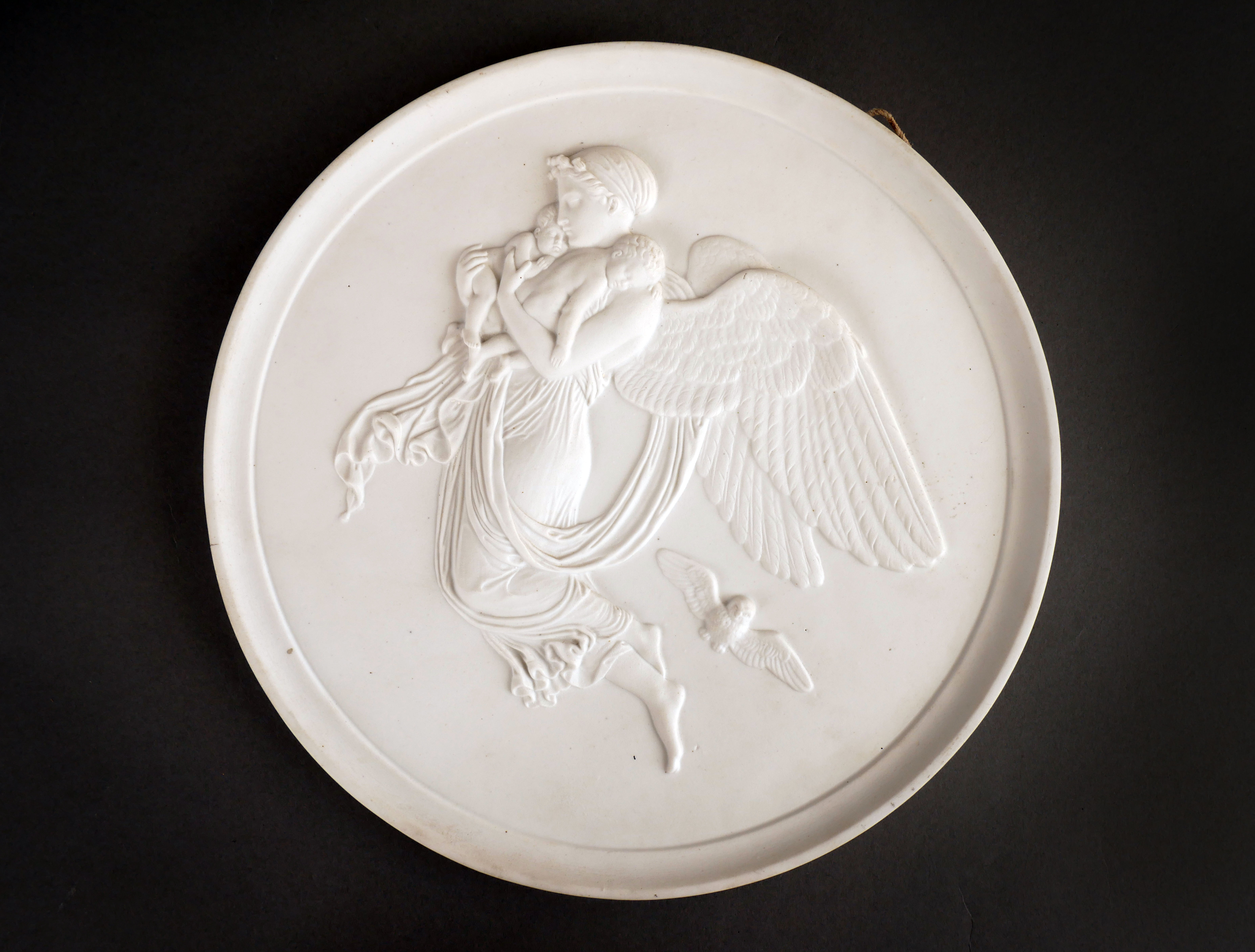
The Royal Copenhagen Porcelain Manufactory began in the 1820s and, with the artist’s authorization, began producing larger editions of bisque figures and reliefs. The rough, marble-like surface of bisque porcelain corresponded to the classicist taste, which was influenced by ancient sculpture. The small-scale format now allowed wealthy citizens to acquire works of art by the famous sculptor and demonstrate their education. The bestsellers were the relief tondi “Day” and ‘Night’ (plaster model from 1815, Thorvaldsen Museum, Inv. No. A369 and A370), followed by the four seasons and “Who Buys Love Gods.” The extraordinary sales success of the 11 cm porcelain version of “Day” and “Night” produced in 1840 – 2,100 copies in the first year – led to an expansion of the range and attracted competitors. One of the modelers, Frederik Wilhelm Gröndahl, joined forces with book and art dealers Jacob Hermann Meyer and Hermann Bing in 1852 and founded the Bing & Gröndahl manufactory in 1854. The watercolor by their porcelain painter, Andreas Juuel, shows how the plaques, reliefs, and small sculptures made of bisque porcelain were presented in bourgeois interiors. With Ibsen and Hjorth, other manufacturers joined in during the 19th century, reproducing Thorvaldsen’s sculptures and reliefs in porcelain or terracotta. After the artist’s death, the Thorvaldsen Museum in Copenhagen, which owns his estate, took over the authorization (Eneret).
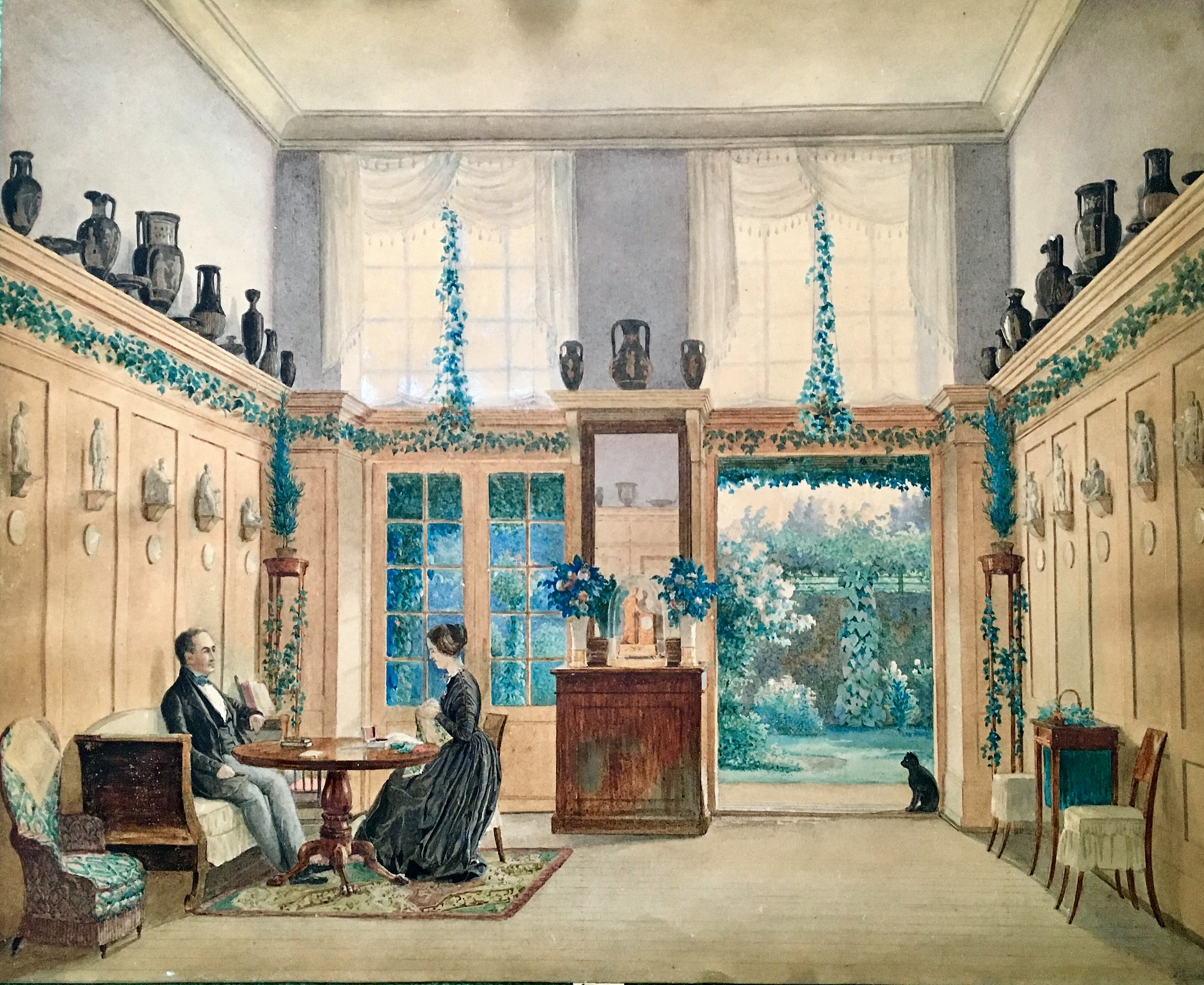
Andreas T. Juuel, Couple sitting in a Garden Room , Watercolor (available for purchase from Ladrón de Guevara)
Those who had more space or planned a more prestigious display and hanging in the form of a glyptotheque, which was very popular in the 19th century and still looks magnificent today, purchased “Day” and “Night” in marble or as plaster casts in their original sizes of 78 and 75 cm in diameter, respectively. Mrs. von Humboldt confessed to a friend that she would have loved to have had the marble version, but was too poor and therefore opted for plaster. Her tondi can still be admired today at Tegel Palace in Berlin. In the Sculpture Gallery at Chatsworth House in Derbyshire, one of the few surviving original installations (and the setting for a scene in the latest Jane Austen film adaptation of “Pride and Prejudice” starring Keira Knightley), ‘Day’ and “Night” in marble hang alongside parts of Thorvaldsen’s Alexander frieze.
Even today, Thorvaldsen’s sculptures and reliefs continue to impress with their timeless beauty, as can be seen in Ladrón de Guevara’s winter garden. They can be easily integrated into modern interiors and combined with works of classical modernism or contemporary art, for example.
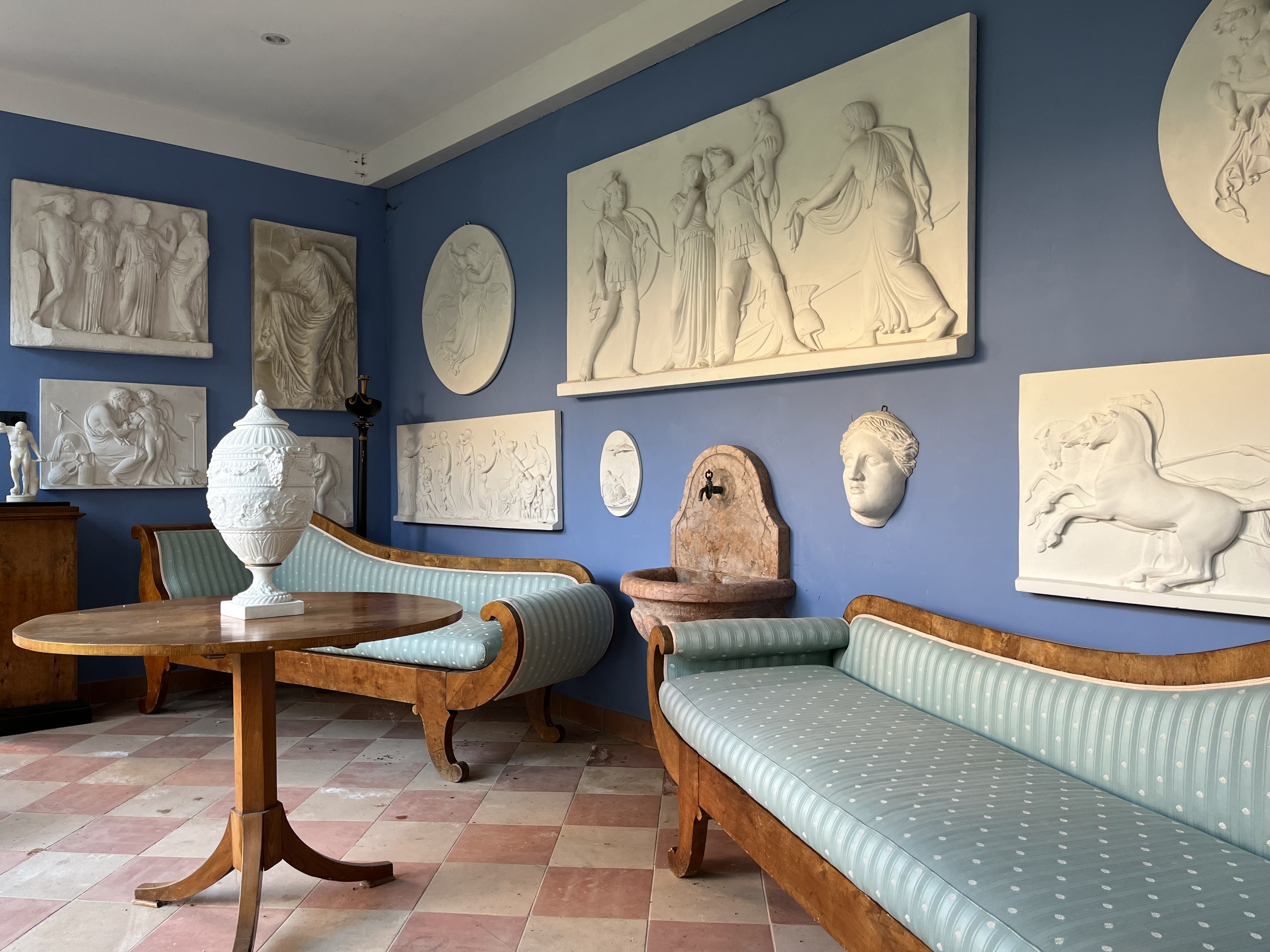
Glyptothek in the wintergarden of Ladrón de Guevara’s Prieber Palais in Bautzen
